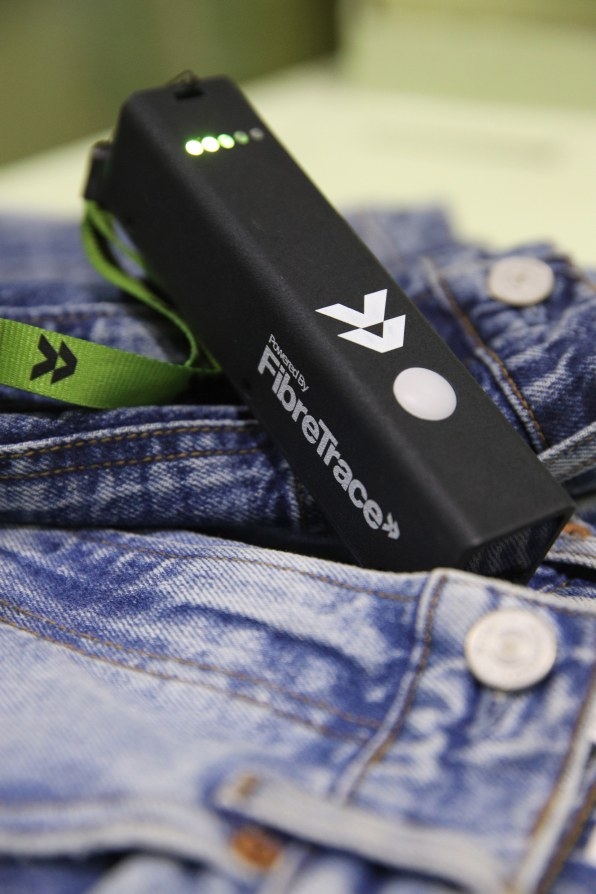Recycled cashmere and mushroom leather: How Reformation is doubling down on sustainability
The clothing company Reformation sells a lot of cashmere—as of now, 39 different styles of cashmere dresses, along with cashmere hats, scarves, skirts, sweatpants, sweatshirts, and more than a dozen variations of cashmere sweaters. While the material actually makes up only a tiny fraction of the company’s total fabric use, cashmere is responsible for nearly half of the brand’s carbon footprint. So Reformation has spent the last few years working to replace cashmere with a recycled version instead. This fall, it launched a collection with 90% recycled fiber, a step closer to its goal of eliminating new cashmere completely.

It’s one of multiple changes that the brand is making as it races to address climate change. It plans to cut emissions by around 20% by 2025, and then more than 40% by 2030, goals that have been externally validated as in line with climate science by the Science Based Targets Initiative. By 2025, all of its materials will be recycled, renewable, or “regenerative.” The company will also pay for more than enough carbon removal to cover the rest of its footprint so it can claim to be “climate positive.”

Reformation first set its emissions goal after a 2018 UN report that outlined the risks if the planet heats up more than 1.5 degrees Celsius. “It was just really dire,” says Kathleen Talbot, the company’s chief sustainability officer. “The message was loud and clear that we weren’t doing enough, and we weren’t moving fast enough to deal with the crisis that climate change actually is.” Since launching in 2009, the company had been focused on sustainability (its first offerings were re-tailored vintage pieces), but knew that it needed to do more. “At that point, we were just about a decade into the Reformation journey, and really trying to evaluate, what’s our role?” Talbot says.
As the team looked at the company’s carbon footprint, they flagged cashmere as one priority. In Mongolia, where a huge number of goats are raised to produce the fiber—more than 60 million animals, as of 2019—overgrazing is turning grasslands into desert. The rising demand for cashmere keeps increasing pressure on the land, and making it harder for herders to find places for the animals to eat. Like cows, the goats also emit methane, a potent greenhouse gas.

When cashmere is recycled, the quality often drops, so finding a replacement was a challenge. “With most of the mechanical recycling technologies today, you’re going to shorten the length of these fibers,” says Talbot. “And they could be weaker, or they could be more prone to pilling.” When the company ramped up its recycled cashmere—turning to post-industrial scraps—it found a process that could refine the fiber to the quality it needed. But for now, the brand still has to use some virgin wool in its blend (or, as it put it in a recent sustainability report, the cashmere is 90% recycled, and “10% terrible”).
Advances in recycling technology may help get to 100%, in the same way that it’s now possible to recycle cotton without losing quality; Reformation also sells “circular denim” made from fabric scraps. “We haven’t totally found the unlock for cashmere yet,” Talbot says. “But we’re feeling really optimistic that the solution actually probably does exist now, and it’s just a matter of getting it to scale.”

To replace silk, another large part of its carbon footprint, the company turned to Naia Renew, a fiber made from 60% wood pulp and 40% recycled plastic. This fabric, again, isn’t the definitive answer. The company ultimately hopes to eliminate plastic, in part because it can contribute to microplastic pollution. “One of our challenges is not to get ‘CO2 tunnel vision,’” says Talbot, “and only focus on delivering these goals while potentially creating other social and environmental impacts.” But with the current fibers made solely from plants, they “couldn’t get the right performance and the right look and feel that we think the customer expects or demands,” she says. The brand launched some products with the new fabric this year, and plans to eliminate silk by the end of next year.
This fall, the brand also released a collection of coats made with Manteco wool, a blend that uses 70% post-consumer recycled fiber. (Like cashmere goats, the sheep that are raised for wool emit methane.) Reformation has also invested in Nativa, a brand of wool that sources from farmers who use “regenerative” practices, like rotational grazing, to help improve soil health and potentially capture more carbon on farms. It’s also investing in regenerative agriculture for cotton farming.

Leather is another challenge, and Reformation is now beginning to test Ecovative’s mushroom-based leather alternative. “We’re in the process of providing feedback on the quality and characteristics of the prototype hides—specifically surrounding their application to dress shoes, which is one of the most challenging categories in this space, as it historically relies heavily on traditional leather,” Talbot says. The company is simultaneously beginning to work with farmers in its existing leather supply chain to help them adopt regenerative techniques, similar to what their wool suppliers are doing. (As with other regenerative agriculture, it still isn’t clear exactly how much this will help, and the company won’t be able to directly measure impacts for a few years.)
The brand is beginning to also think more about how to use materials in a closed loop. Earlier this year, it relaunched a recycling program with SuperCircle, a company that aggregates used clothing collected from customers. “Historically, companies have struggled to independently reach the high volume required to recycle at scale, which would honestly take years for an individual brand to amass through customer take-back,” says Talbot. “This means that brands that have recycling programs in place are most likely sitting on piles of clothing and footwear with nowhere to send them.”
The company’s designers are also considering how to make products easier to recycle. A recently launched pair of sneakers, for example, is designed to be fully recyclable, including the soles. The designers partnered with the company that would ultimately recycle the shoes while working on the design. “We would send them our products, and they would test different ways of of actually making sure that they could disassemble and recycle the component parts,” she says. Customers will have to return old shoes to a store or request to send them back via Reformation’s website.

Materials make up the largest part of Reformation’s carbon footprint, but it’s also working on the rest of its supply chain, including helping external factories become more efficient and transition to renewable energy. (In L.A., where it leases its own factory building, it tried unsuccessfully to add solar power, and now buys renewable energy credits.)
To cut shipping emissions, it’s worked on reducing the size of packages—so more can fit on a truck or ship—and is looking for ways to send fewer shipments by air. “We need to fly a lot less if we want to hit our carbon reduction targets—air transport is around 20 to 30 times more carbon-intensive than using a cargo ship,” says Talbot. “We need to start moving as much of our stuff via ocean or ground transport as possible.”
All of these efforts are still only a beginning, and the company will have to rely on carbon offsets, for now, to cover the rest. But it’s an example of the kind of comprehensive work that every fashion brand should be doing. “This year has been a sprint,” says Talbot. “We’ve been able to introduce nine of these materials that have been in the works for some time. It’s really nice to be able to also talk about them not just as stand-alones or capsules. [They’re] meant to become core fabrications and really mark out the future material—not just for Ref, hopefully, but also for the industry.”
(61)



